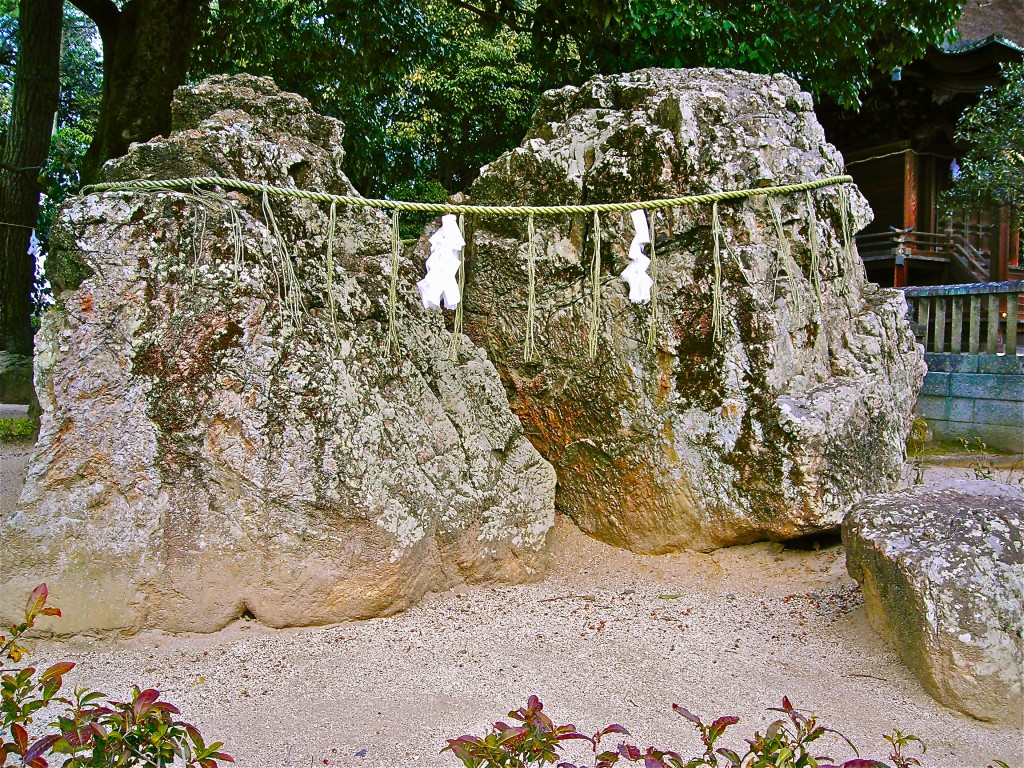
Pair of iwakura at Achi Jinja in Kurashiki, Okayama Prefecture
Nice paragraph today by Stephen Mansfield writing about Kurashiki near Okayama… it draws attention to one of the aspects of Shinto that is little written about and yet is central to the practice as a whole. What’s interesting about the article is that Achi Shrine of which Mansfield writes lies close to the Inland Sea and has strong connections with immigrants from Korea, which may have been the source of rock worship in Japan. It’s something I’ll be touching on in my next book, hopefully…
*****************************************
For those interested in Japan’s pre-Shinto spirit world and the putative origins of its early stone gardens, Achi Shrine is home to a number of large granite boulders known as iwakura. Also called “seats of the gods,” they appealed to the early Japanese, who possessed nothing comparable to shrines or religious reliquaries — to them the stones were natural force fields, attracting the presence of deities. Found in forest clearings and other natural settings, iwakura were cordoned off with rice-fiber ropes, and the ground around them strewn with pebbles, in what could well be a seminal model of the dry landscape garden. After staring for some time into the dark mirror of the stones, which are older than everything here, even the historic district in Kurashiki seemed less aged.
*****************************************
For more about sacred rocks, see the postings under the category for Rocks on the right, particularly this one.
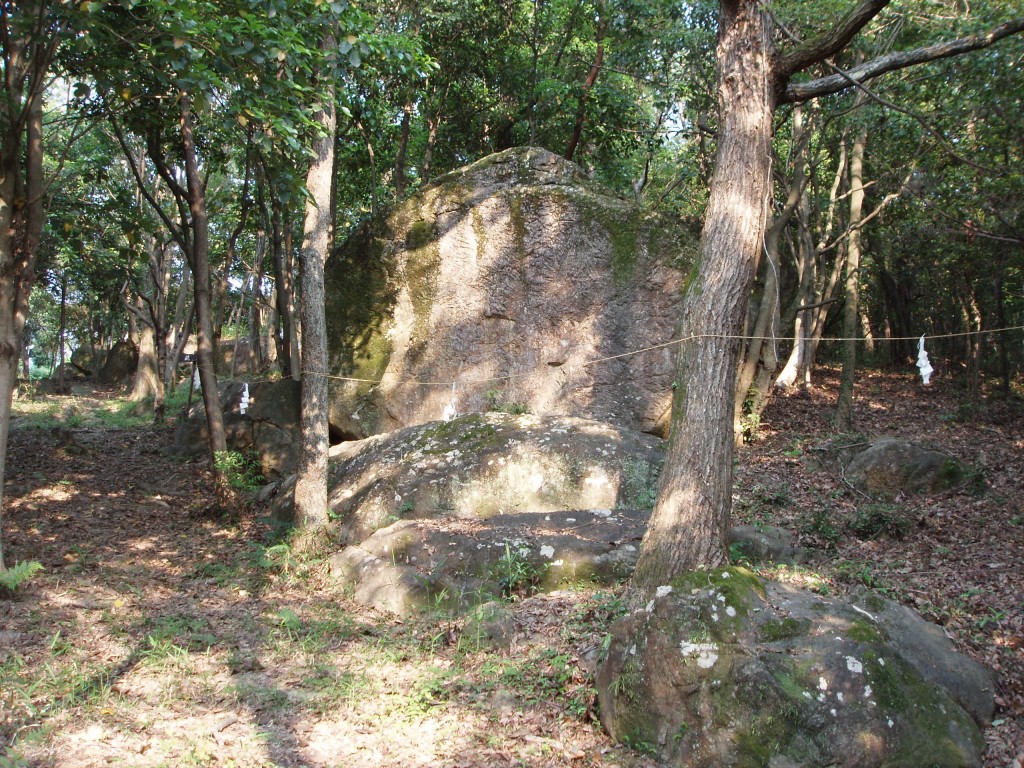
Sacred stone on the hill behind Kibitsu Jinja, Okayama
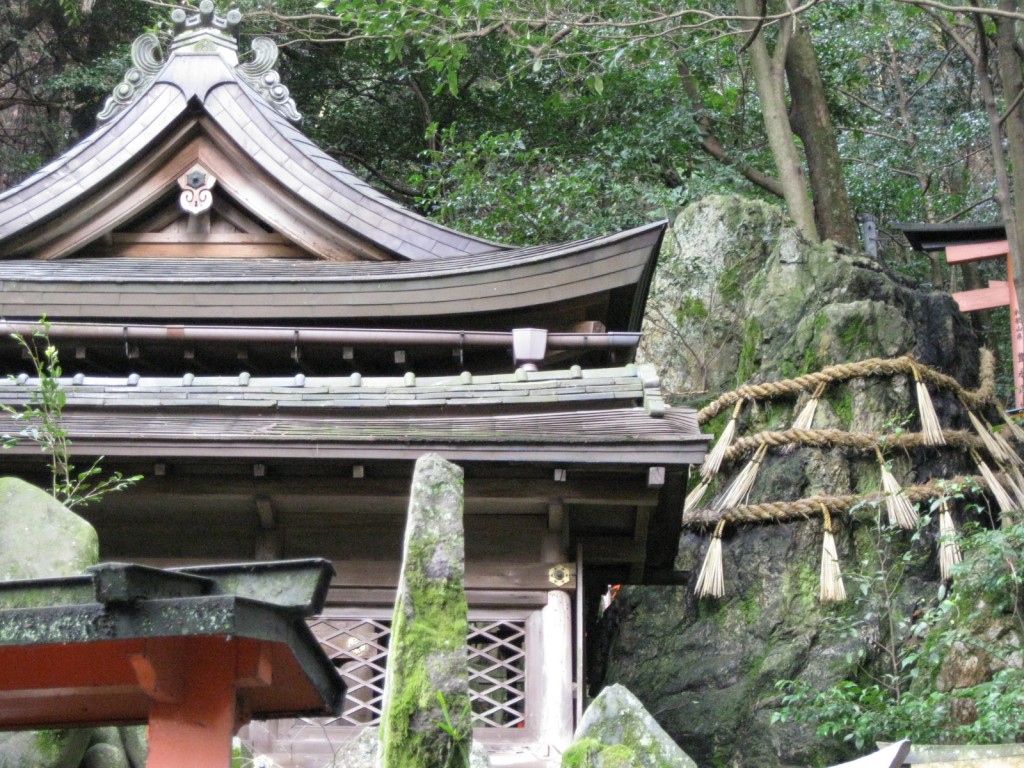
Fushimi hill behind the famous Fushimi Inari shrine is a treasure trove of sacred rocks
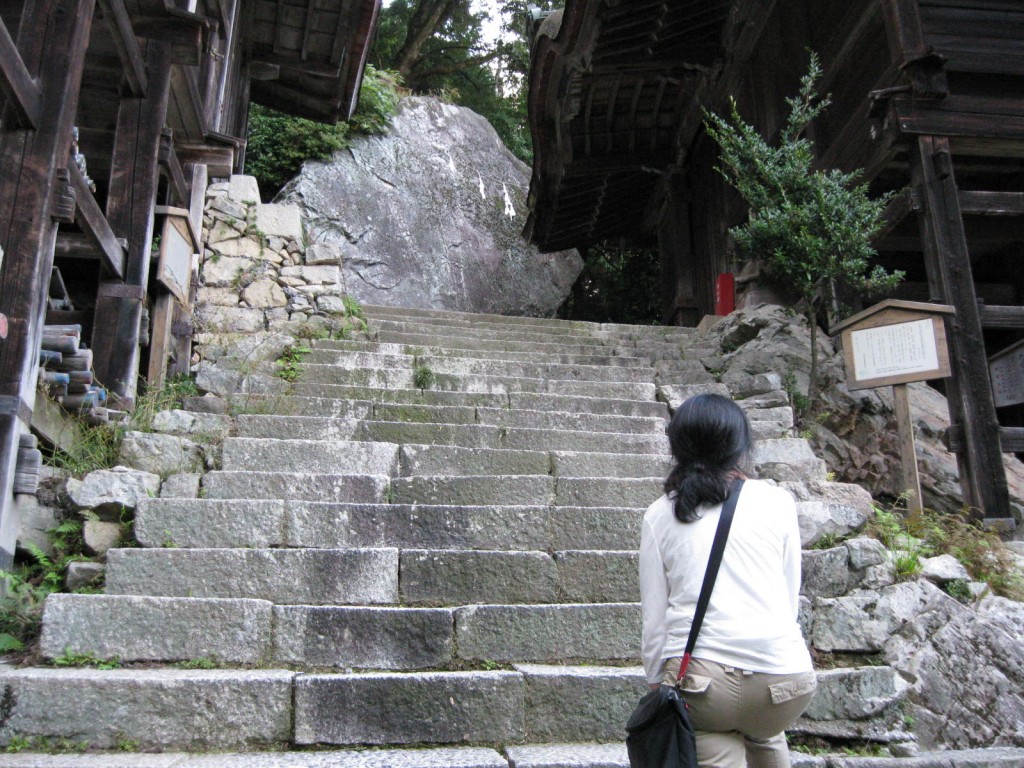
The giant mirror rock at Hiyoshi Shrine near Lake Biwa, where the kami may have first descended
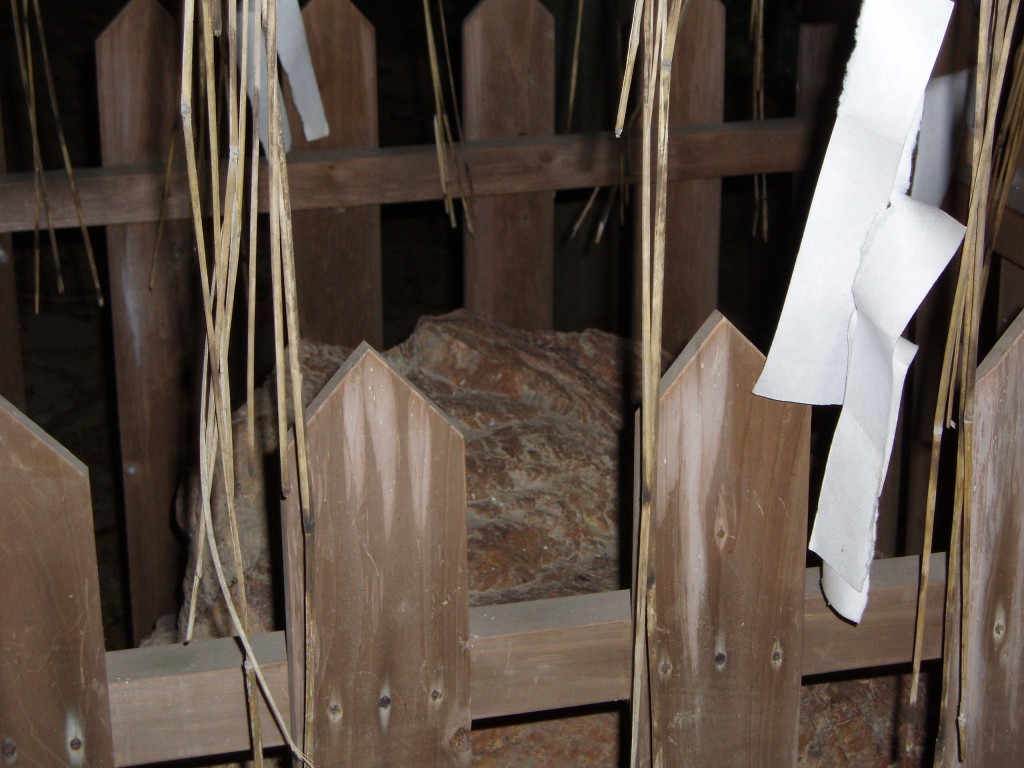
A sacred rock in the town of.... Iwakura! (Northern outskirts of Kyoto)
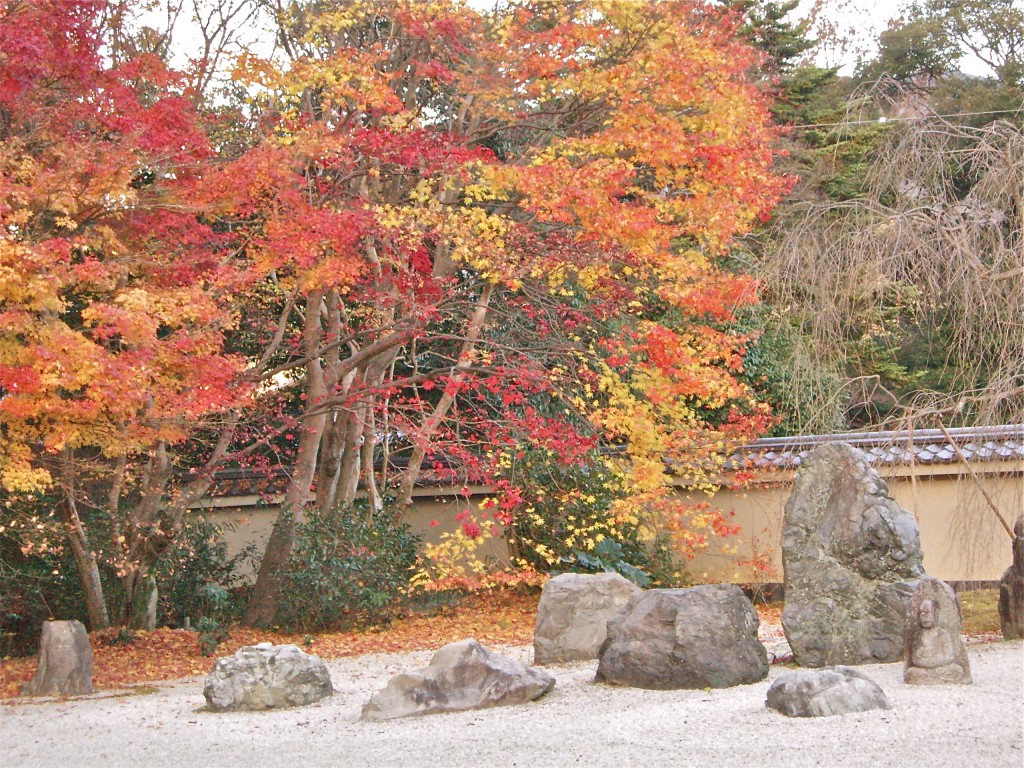
Did sacred rocks provide the inspiration for the Japanese rock garden?

Leave a Reply